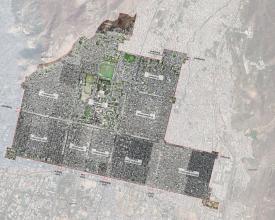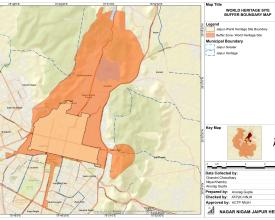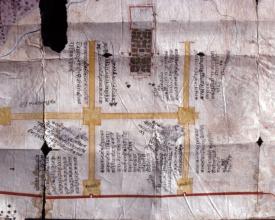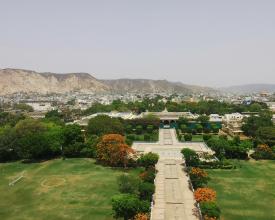
Restaurar el equilibrio: Reconocer la naturaleza y el conocimiento en el patrimonio de Jaipur mediante la colaboración entre investigación y práctica
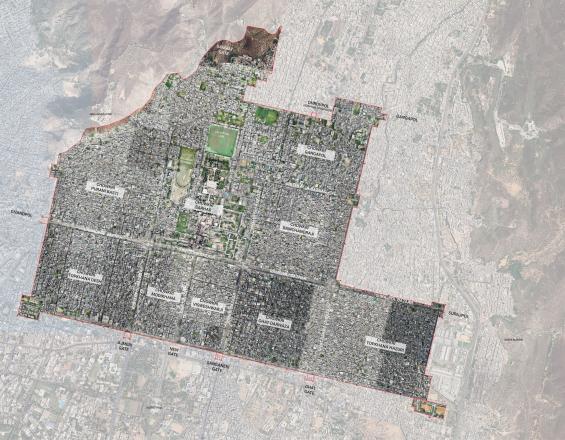
La ciudad de Jaipur, sitio cultural del Patrimonio Mundial situado en una región árida de la India, está sufriendo las presiones de una población humana en rápido crecimiento y es susceptible de sufrir un impacto cada vez mayor del cambio climático. Para abordar algunos de los problemas clave a los que se enfrenta la ciudad, el proceso establecido por un equipo multidisciplinar de investigación-práctica durante el Laboratorio de Lugares Patrimoniales del ICCROM y la UICN condujo a un programa de investigación de amplio alcance, orientado a las necesidades de gestión, que se sumará al cuerpo existente de conservación del patrimonio de Jaipur. El Heritage Place Lab promovió una colaboración interfuncional entre la Universidad de Manipal, el Centro de Categoría 2 del Wildlife Institute of India y la Corporación Municipal y de Urbanismo de Jaipur, en la que todas las instituciones aplicaron sus respectivos conocimientos para (1) revisar sus enfoques individuales de la conservación del patrimonio y (2) desarrollar una política común que incorpore diversos puntos de vista y que pueda servir de modelo para otros equipos, especialmente en el campo del patrimonio urbano.
Impactos
El primer impacto fue poder identificar los retos clave a los que se enfrenta el bien con aportaciones de las perspectivas más amplias de los diferentes miembros del equipo -arquitectos conservacionistas, académicos, investigadores del patrimonio natural y cultural, profesionales del urbanismo y la gestión urbana- para poder aprovechar las amplias características naturales que sustentan su ubicación histórica para enmarcar cuestiones de gestión más eficaces y preseleccionar preguntas que las aborden.
La misma mezcla de conocimientos y técnicas condujo a la propuesta de que el objetivo más amplio de la conservación de los conocimientos tradicionales indígenas pudiera centrarse en lo que era de importancia clave para Jaipur. De ahí surgió la necesidad de investigar en profundidad los sistemas tradicionales de gestión del agua. Estos sistemas habían funcionado muy eficazmente cuando se creó la ciudad y aún podían ofrecer formas de mejorar la gestión del agua y contribuir a satisfacer las necesidades hídricas actuales. Un examen estructurado de los archivos de las directrices históricas de desarrollo urbano y control arquitectónico ayudaría a conservar el patrimonio de Jaipur mediante la identificación y catalogación de los registros patrimoniales.
Todas las prioridades de investigación identificadas anteriormente conducirían a soluciones que (1) preservarían el extenso patrimonio de Jaipur y ayudarían a promocionarlo entre los ciudadanos, y (2) provocarían cambios impactantes en las condiciones de vida de la ciudad y satisfarían las necesidades actuales de los ciudadanos.
